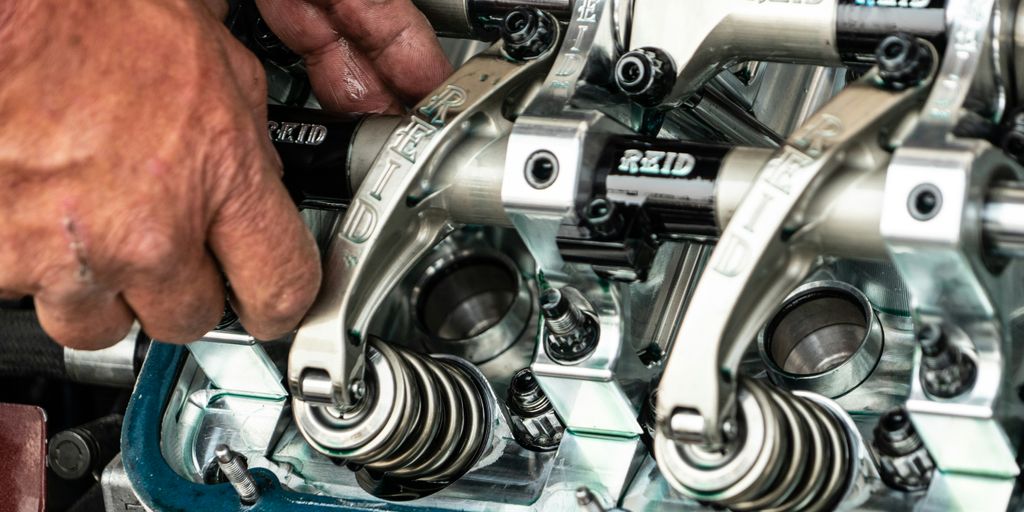Automotive
Car Maintenance Tips for a Long-Lasting Vehicle

Taking care of your car is essential for ensuring it lasts a long time. Regular maintenance not only keeps your vehicle running smoothly but also saves you money in the long run. Here are some key takeaways to help you maintain your car effectively.
Key Takeaways
- Keep up with regular oil changes to protect your engine.
- Check and maintain your tyre pressure to ensure safety and longevity.
- Use your parking brake to reduce strain on your transmission.
- Perform regular inspections to catch minor issues before they become major problems.
- Drive responsibly to minimise wear and tear on your vehicle.
Essential Car Maintenance Tips for Longevity
Regular Oil Changes
Changing your oil regularly is one of the most crucial aspects of car care. It helps keep your engine running smoothly and prevents damage. Aim to change your oil every 3,000 to 5,000 miles, depending on your vehicle’s needs. Here’s a quick checklist for oil changes:
- Check oil level monthly.
- Look for signs of dirty oil (dark colour, gritty texture).
- Follow the manufacturer’s schedule for oil changes.
Scheduled Maintenance Services
Staying on top of scheduled maintenance services is vital. Regular check-ups can help catch problems early and save you money in the long run. Here are some key services to keep in mind:
- Brake inspections.
- Fluid checks (coolant, brake fluid, etc.).
- Battery tests.
Timely Tune-Ups
Regular tune-ups can keep your car’s electrical system in good shape. They help ensure that your vehicle runs efficiently and can prevent breakdowns. Signs that you might need a tune-up include:
- Decreased fuel efficiency.
- Unusual noises from the engine.
- Warning lights on the dashboard.
Keeping your car well-maintained not only extends its life but also enhances your safety on the road. Regular checks and services can prevent small issues from becoming major problems.
The Importance of Tyre Care

Checking Tyre Pressure
Maintaining the correct tyre pressure is crucial for your vehicle’s safety and performance. Under-inflated tyres can lead to poor handling and increased wear. Check your tyre pressure at least once a month, and before long trips, using a reliable pressure gauge. Here’s a quick guide:
| Tyre Pressure (PSI) | Action Required |
|---|---|
| Below recommended | Inflate immediately |
| At recommended | Good to go! |
| Above recommended | Deflate slightly |
Regular Tyre Rotation
To ensure even wear, it’s important to rotate your tyres regularly. This can help extend their lifespan and improve your car’s handling. Aim to rotate your tyres every 5,000 to 8,000 miles. Here are some benefits of regular rotation:
- Increases tyre life
- Enhances vehicle stability
- Improves fuel efficiency
Reading Tyre Numbers
Understanding your tyre numbers can help you make informed decisions about replacements. The numbers indicate size, type, and load capacity. For example, a tyre marked as 205/55R16 means:
- 205: Width in mm
- 55: Aspect ratio
- R: Radial construction
- 16: Diameter in inches
Regular tyre inspections maintain your vehicle’s safety and best performance. Knowing how to evaluate tyre tread depth and recognise uneven wear patterns is essential for safe driving.
Maintaining Your Car’s Fluids
Essential Fluids to Check
Maintaining your car’s fluids is crucial for its performance and longevity. Here are the key fluids you should monitor:
- Engine Oil: This is the most vital fluid. It lubricates the engine parts, preventing wear and tear. Check it regularly, especially if your car has high mileage.
- Coolant: Also known as antifreeze, it helps regulate engine temperature. Check it before extreme weather seasons.
- Brake Fluid: Essential for safe braking, it should be checked at every oil change.
- Transmission Fluid: Ensure it’s at the right level to keep your transmission functioning smoothly.
- Power Steering Fluid: This fluid helps with steering ease. Check it at least once a year.
- Windshield Washer Fluid: Keep this topped up for clear visibility, especially in rainy or winter conditions.
Signs of Fluid Leaks
Be alert for these signs that may indicate a leak:
- Puddles under your car
- Warning lights on the dashboard
- Unusual smells or sounds from the engine
How to Top Off Fluids
If you need to add fluids, follow these steps:
- Locate the reservoir for the fluid you need to top off.
- Clean the area around the cap to prevent dirt from entering.
- Add the appropriate fluid slowly, checking the level frequently.
- Replace the cap securely after topping off.
Keeping your car’s fluids in check can save you from costly repairs and ensure a smooth ride. Regular maintenance is key to a long-lasting vehicle.
| Fluid Type | Recommended Check Frequency |
|---|---|
| Engine Oil | Every 3,000 – 5,000 miles |
| Coolant | Twice a year |
| Brake Fluid | At every oil change |
| Transmission Fluid | Once a year |
| Power Steering Fluid | Once a year |
| Windshield Washer Fluid | Monthly |
Protecting Your Car’s Exterior
Regular Washing and Waxing
Keeping your car clean is essential for its longevity. Regular washing and waxing not only enhance the appearance but also protect the paint from dirt and grime. Here are some tips:
- Wash your car at least once a month.
- Use a gentle car soap to avoid scratches.
- Apply wax every three months for added protection.
Preventing Rust and Corrosion
Rust can be a car’s worst enemy. To prevent it:
- Inspect your car regularly for any scratches or chips in the paint.
- Touch up any damaged areas immediately to prevent moisture from getting in.
- Consider applying a rust-proofing treatment if you live in a humid area.
Fixing Paint Chips Promptly
Ignoring paint chips can lead to bigger problems. Here’s what to do:
- Clean the area around the chip.
- Use touch-up paint that matches your car’s colour.
- Apply a clear coat to seal the repair.
Keeping your car’s exterior in good shape is crucial for maintaining its value and performance. One of the most effective ways to protect your car’s paint during the rainy and hurricane seasons is by maintaining a regular washing and waxing routine.
By following these simple steps, you can ensure that your car remains in top condition for years to come.
Smart Driving Habits for Car Longevity
Avoiding Rapid Acceleration
Accelerating too quickly can harm your vehicle. When you push the gas pedal hard, it forces your engine and transmission to work harder, which can lead to faster wear and tear. Instead, try to accelerate gently to save fuel and extend the life of your car’s parts.
Moderate Braking
Braking suddenly can put a lot of stress on your brakes and suspension. Here are some tips to brake more effectively:
- Anticipate stops: Look ahead and slow down gradually.
- Use engine braking: Shift to a lower gear when slowing down.
- Avoid hard stops: Try to stop smoothly whenever possible.
Turning While Moving
Turning the steering wheel while your car is stationary can damage your power steering system. To protect your vehicle:
- Always turn while the car is moving.
- This helps distribute the strain evenly across the steering components.
- It also reduces uneven tyre wear, which can save you money in the long run.
By adopting these smart driving habits, you can significantly enhance your vehicle’s lifespan and performance. Remember, every little action counts towards maintaining your car’s health.
Summary
In summary, being mindful of how you drive can make a big difference. Avoid rapid acceleration, brake moderately, and always turn while moving. These habits not only help your car last longer but also improve your overall driving experience.
Using Your Parking Brake Correctly

When to Use the Parking Brake
Using the parking brake is essential, especially when you park on an incline. Engaging the parking brake helps prevent your car from rolling away. It’s a good habit to use it every time you park, regardless of the slope.
Preventing Transmission Strain
When you park, simply shifting into park can put stress on your transmission. This can lead to wear and tear over time. To avoid this:
- Shift your car into neutral.
- Apply the parking brake.
- Then shift into park.
This method protects your transmission and keeps it in good shape.
Proper Parking Brake Techniques
To ensure your parking brake works effectively:
- Regularly check the brake cables for wear.
- Make sure the brake engages fully when applied.
- Disengage the parking brake before driving to avoid damage.
Using your parking brake correctly can significantly extend the life of your vehicle’s transmission and prevent costly repairs.
Remember, knowing how and when to use your emergency brake is crucial for your car’s safety and longevity. It’s especially important if you are working on your car, as it prevents rolling and potential accidents.
Keeping Your Car Clean Inside and Out
Keeping your car clean is essential for its longevity and comfort. A clean car not only looks good but also helps maintain its value. Here are some tips to keep both the inside and outside of your vehicle in top shape:
Cleaning Auto Interiors
- Use a steam cleaner to lift stains from carpet and upholstery, but soap and water on a soft microfiber cloth works, too.
- Regularly vacuum the interior to remove dust and debris.
- Wipe down surfaces with appropriate cleaning products to prevent damage.
Preventing Leather Cracks
- Apply leather conditioner every few months to keep seats supple.
- Avoid direct sunlight on leather to prevent fading and cracking.
- Clean spills immediately to prevent stains.
Using the Right Cleaning Products
- Choose products specifically designed for automotive use to avoid damage.
- Test any new product on a small area first to ensure compatibility.
- Avoid harsh chemicals that can harm surfaces or the environment.
Keeping your car clean inside and out not only enhances its appearance but also contributes to a healthier driving environment. Regular maintenance can prevent costly repairs down the line.
Regular Inspections and Minor Repairs
Weekly Inspection Checklist
Performing regular checks on your vehicle can help catch issues before they become serious. Here’s a simple checklist to follow:
- Brakes: Inspect brake pads and ensure rotors are in good condition.
- Engine: Listen for unusual sounds and check for rust.
- Fluids and Philtres: Regularly check oil, brake fluid, and air philtres for any signs of wear.
- Tyres: Monitor tyre pressure and tread depth, especially before long trips.
- Lights: Ensure all lights are functioning properly for safety.
- Wipers: Check wiper blades for wear to maintain visibility.
Tending to Minor Repairs
It’s crucial to address small issues promptly. Ignoring them can lead to bigger problems later. Here are some common minor repairs to keep an eye on:
- Listen for Unusual Noises: If you hear strange sounds, investigate them early.
- Check for Fluid Leaks: Look for puddles under your car that could indicate leaks.
- Monitor Performance: If your car pulls to one side or the brakes feel off, get them checked.
Regular inspections can save you money and keep your car running smoothly. Always follow the manufacturer’s maintenance recommendations found in your vehicle’s owner’s manual.
By staying on top of these checks and repairs, you can ensure your vehicle remains in good condition for years to come.
The Role of Air Philtres in Car Maintenance
Replacing Engine Air Philtres
Regularly changing your engine air philtre is crucial for your vehicle’s health. A clean air philtre helps keep dirt and debris out of the engine, which can prevent costly repairs. A dirty philtre can lead to engine damage. It’s generally recommended to replace it every 15,000 to 20,000 miles.
Benefits of Clean Air Philtres
Having a clean air philtre can improve your car’s performance in several ways:
- Better fuel efficiency: A clean philtre allows more air to flow into the engine, which helps it run more efficiently.
- Reduced emissions: Cleaner air means less pollution from your vehicle.
- Longer engine life: Keeping dirt out of the engine can help it last longer.
Signs of a Dirty Air Philtre
You might need to replace your air philtre if you notice:
- Decreased fuel efficiency.
- Unusual engine noises.
- A check engine light on your dashboard.
Keeping your air philtre clean is a simple yet effective way to maintain your car’s performance and longevity. Regular checks can save you from expensive repairs down the line.
Driving Responsibly to Extend Car Life
Avoiding High Speeds
Driving at high speeds can put extra strain on your vehicle. Keeping your speed moderate not only saves fuel but also reduces wear on your engine and brakes. Here are some tips to help you drive responsibly:
- Stick to speed limits.
- Use cruise control on highways to maintain a steady speed.
- Anticipate stops to avoid sudden braking.
Maintaining Safe Distances
Always keep a safe distance from the car in front of you. This helps prevent accidents and protects your vehicle from debris. Here’s how to maintain a safe distance:
- Use the two-second rule: stay at least two seconds behind the vehicle ahead.
- Increase distance in poor weather conditions.
- Avoid tailgating to reduce the risk of collisions.
Reducing Vehicle Weight
Carrying unnecessary items can make your vehicle work harder, which can lead to increased fuel consumption and wear. To keep your car light:
- Remove items you don’t need from the trunk.
- Avoid carrying heavy tools or equipment unless necessary.
- Regularly check for and remove any trash or clutter.
Driving responsibly not only extends the life of your vehicle but also enhances your safety on the road. By adopting these habits, you can enjoy a smoother ride and reduce the need for repairs.
By following these simple yet effective tips, you can ensure that your car remains in good condition for years to come. Remember, responsible driving is key to longevity!
The Importance of Wiper Blade Maintenance
When to Replace Wiper Blades
Wiper blades are essential for clear visibility while driving. Over time, they wear out and can leave streaks or smudges on your windshield, making it harder to see. It’s important to check them regularly, especially before rainy seasons. If you notice any cracks or tears in the rubber, it’s time to replace them.
Checking Wiper Blade Condition
To ensure your wipers are in good shape, follow these steps:
- Lift the wipers off the windshield.
- Run your finger along the rubber edge.
- Look for bumps, tears, or any signs of wear.
If you find any issues, replace the blades immediately to maintain safety on the road.
Impact of Worn Wipers on Visibility
Worn wipers can severely affect your visibility, especially in bad weather. Here’s a quick overview of how they can impact your driving:
| Condition of Wipers | Visibility Impact |
|---|---|
| Good | Clear |
| Worn | Streaky |
| Damaged | Poor |
Regular maintenance of your wiper blades is crucial for safe driving. Don’t wait until it’s too late to check them!
Handling Common Driving Scenarios
Avoiding Road Bumps
Steering clear of road bumps is crucial for your vehicle’s health. Hitting bumps or potholes can cause significant damage to your steering and suspension systems. Here are some tips to avoid bumps:
- Always stay alert for uneven road surfaces.
- Plan your route to avoid known pothole areas.
- Drive at a moderate speed to react quickly.
Taking Longer Trips
Taking longer trips occasionally is beneficial for your engine. Short trips can prevent the engine from reaching its optimal temperature, leading to internal issues. Here’s why longer drives matter:
- They help burn off excess moisture.
- They keep the engine clean and free from sludge.
- They ensure all components are well lubricated.
Driving Frequently
Regular driving is essential for maintaining your vehicle. Letting your car sit idle can lead to various problems, such as oil settling and battery drainage. To keep your car in good shape:
- Drive at least once a week.
- Ensure the oil circulates properly.
- Keep the battery charged by using the car regularly.
Regular driving not only keeps your car in good condition but also helps you spot any potential issues early on.
By following these simple practises, you can significantly extend the life of your vehicle and reduce the need for costly repairs. Remember, avoiding bumps, taking longer trips, and driving frequently are key to keeping your car running smoothly!
Conclusion
In summary, while you can’t expect your car to last forever, you can certainly take steps to extend its life. Regular maintenance is key, from checking your oil and fluids to keeping your tyres in good shape. Pay attention to warning lights and strange noises, as these can signal problems that need fixing. Using your parking brake when parked on a slope can also prevent unnecessary wear on your transmission. By following these simple tips, you can keep your vehicle running smoothly for many years, saving you money and hassle in the long run.
-

 Press Release6 days ago
Press Release6 days agoNura Labs Files Revolutionary Patent: AI-Powered Wallet Solves the $180 Billion Crypto Staking Complexity Crisis
-

 Press Release4 days ago
Press Release4 days agoGlobal Compound Feeds and Additives Industry Report: Market Expansion and Competitive Insights to 2035
-

 Technology4 days ago
Technology4 days agoWhat to Know Before Switching Cell Phone Network Services in 2025
-

 Press Release2 days ago
Press Release2 days agoCrypto WINNAZ Launches First On-Chain Yield Engine for Meme Coins, Enabling 20x–300x Returns


































